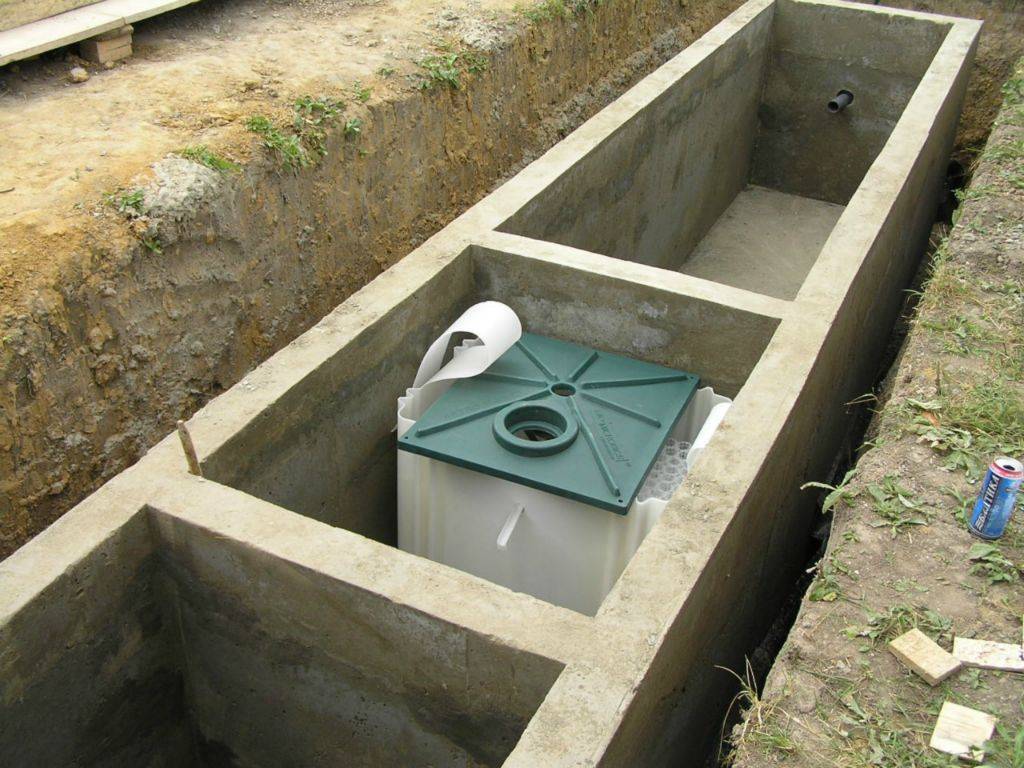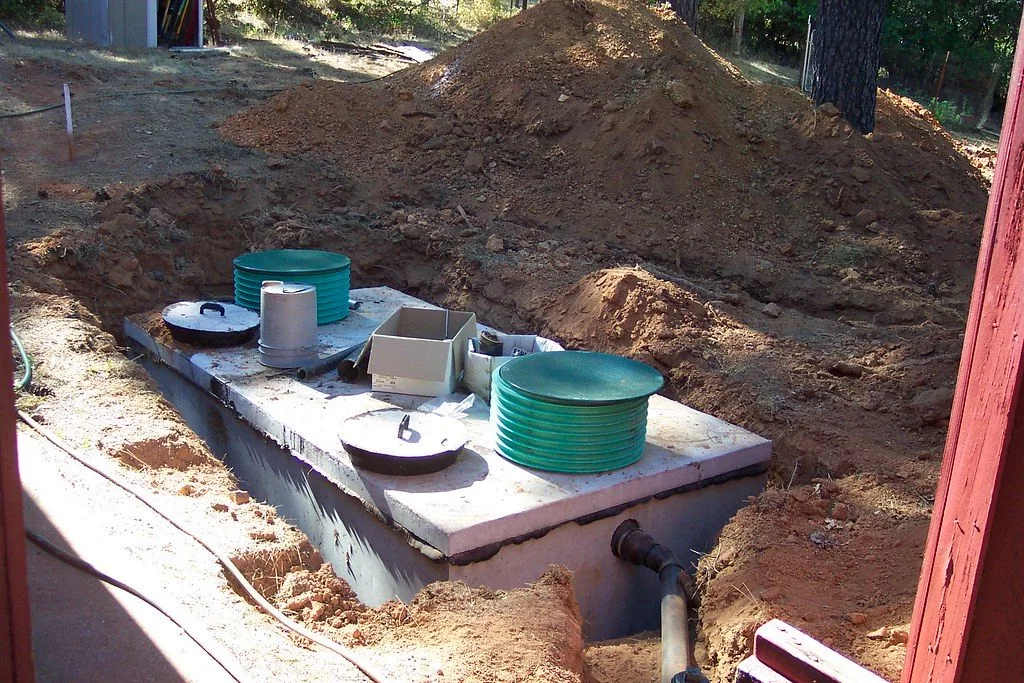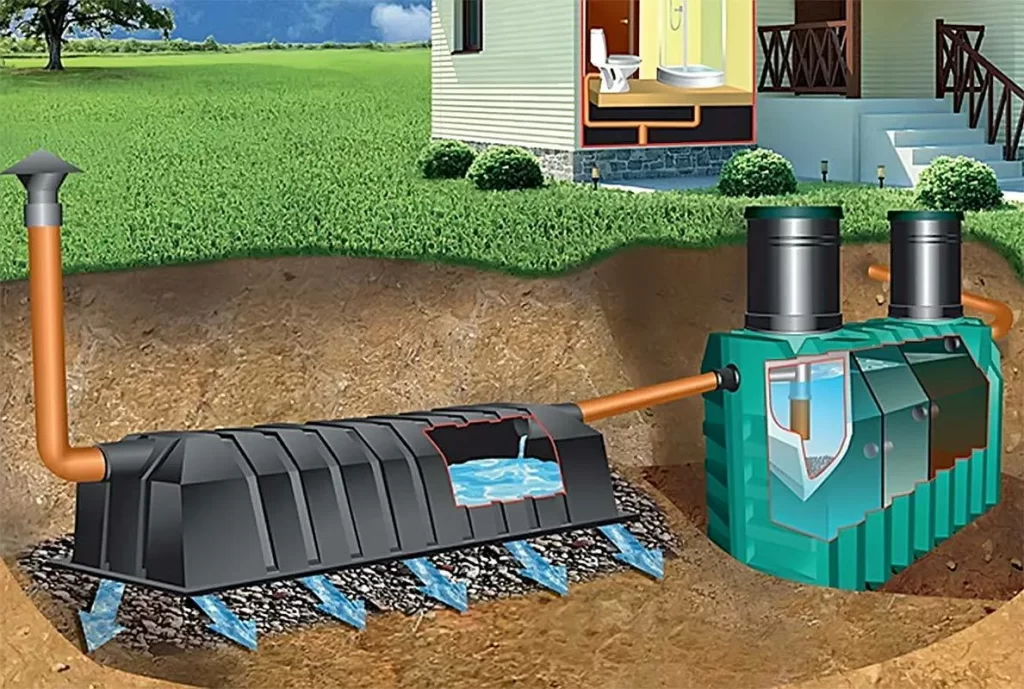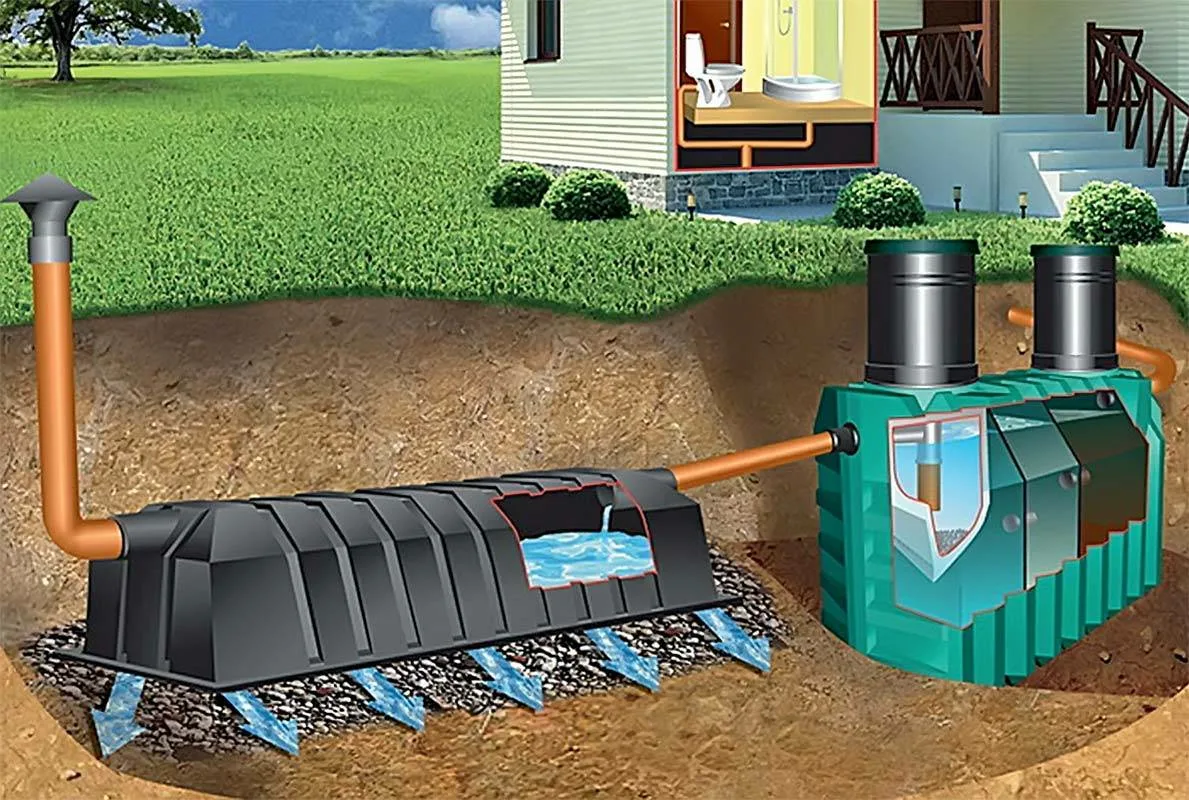In a country house, it is comfortable to live all year round, if heating and sewage are arranged. The system responsible for the purification of effluents deserves a separate consideration. Without it, containers are very likely to overflow, groundwater and soil are infected. Septic tanks are a type of construction with a waterproof surface. Inside – compartments or sections in the number of two or three pieces. Models differ in characteristics, purpose. It is the characteristics of septic tanks that play the most important role when choosing a station.
On the market there is a large number of models and devices, with which it is recommended to familiarize yourself in advance. Then it is easier to make a choice. The future owner will easily determine how expedient it is to apply a particular model.
What materials are used for them
Materials from which the design is created, in many respects affect the competent choice. Positive, negative sides are described below.
- Fiberglass. It is distinguished not only by chemical neutrality, but also by lightness and strength. Suitable for creating durable structures that will be practical for use.
- From polymers. A cheap material that has a small mass. Disadvantage – the base is very likely to crack under the influence of low temperatures. Products are poorly protected from rodents.
- Reservoirs made of steel. With high technological strength and democratic prices. But additional waterproofing is required, otherwise corrosive processes appear.
- Constructions of foam blocks, bricks. Clay is used to seal the bottom and walls. It is allowed to use coating compositions.
- Concrete structures of monolithic type, involving the creation of formwork.
- Reinforced concrete rings. Resistant to corrosion, retain strength in different conditions. But installation causes problems if you do not seek the help of special equipment.
Strength and tightness remain the main requirements for materials, no matter which option is chosen. Otherwise, the ground takes in the effluent without treatment.

About the realized functions
The factor involves the division of septic tanks into three groups:
- Septic type. The basis – two chambers, or wells with tightness and communicating with each other. Regular timely pumping is necessary, maintaining stable operation.
- Sump tanks.Ground aftertreatment – a system located inside. The purification rate is generally 70%. In the structure there is usually one section, but there are more. Liquid and solid components of the waste are separated from each other, then anaerobes are used for sedimentation and further movement.
- Stations, inside which there is a deep purification of biological method.Inside the product is a certain number of chambers with compartments. Chemical and physical, mechanical methods – they are combined during decomposition, which is characterized by several stages. Organics, which remains after the application of technologies, involves direct discharge into water bodies, soils.
The execution is the easiest for accumulators, if compared to other varieties. Wastewater is collected in the tank, which then passes through stratification naturally. The lighter fluid rises and the heavy particles settle out.
This is also how the parts are separated from each other in the settling tank group. Infiltrators are used for disposal of clarified water into the ground.
Infiltrators are chambers that have no bottom, they play the role of aeration platforms. The wastewater undergoes additional treatment when it gets inside. Passage to filters for liquids is mandatory before discharge into the environment.
Deep treatment makes decomposition effective due to the fact that several methods are applied at once. The treatment steps are described as follows:
- The solid group of fractions undergoes primary settling.
- Bioprocessing of organics.
- The contents are treated chemically.
- Waters are filtered.
95-98% is the percentage of purification with such stations for water. The compositions become neutral, they are discharged into the environment.

Optimal choice
The needs of the occupants together with the operating conditions are the most important factors affecting the final decision.
Any model differs in cost, depending on the indicators:
- Additional equipment of the septic tank.
- The technology by which the waste is processed.
- Connected tanks, volume.
- Material of the housing for the septic tank.
A septic tank in a complete set may include components:
- Controlling systems operating on automatic.
- Float level gauges.
- Filters.
- Drainage pumps.
- Compressors.
Compressors will be relevant for biological treatment stations. They supply oxygen, without it the process is not organized.
Drainage pumps are mandatory when the discharge point is higher than the septic tank.
What factory installations are better than homemade
Homemade options with a base of car tires and rings of concrete, brick are more affordable relative to the cost. But construction takes a lot of effort and time.
The requirements have an impact on the structures being built. Factory installations are characterized by full compliance with existing norms, environmental protection.
Groundwater and soil
When selecting septic tanks, important factors include consideration of the geological conditions that are formed on the ground. When adding infiltrators and absorption wells treatment stations assume the location of water underground at least 1 meter below the bottom in the system, defined conventionally.
Water after treatment is discharged to the ground when these components are present:
- Sandy plastic loam.
- Galechnikovyh soils.
- Gravel.
- Sands.
Filtration fields are also often used for wastewater aftertreatment. When assembling the system, a set of pipes with perforations covered with a shell is taken. For the latter take a certain amount of gravel and crushed stone, filtering materials.

Pumps are used if the treatment plant is below the fields conducting filtration.
Water simply does not pass through clay soils, the arrangement of a pre-treatment system is not required. The septic tank simply floods, will cease to work properly.
For discharge organize pipeline routes with tightness. Or create centralized networks that perform the same function.
About models in houses for seasonal residence
Installation of a multi-compartment production process is irrelevant if the site is visited on weekends, in the warm season. Such conditions make it relevant to choose accumulators of small capacity with a single chamber.
Septic tanks are characterized by compact dimensions, so it is convenient to deepen into excavations and carry from place to place. There is no need to use special equipment, you can’t do it yourself.
Year-round use
It is recommended to give preference to treatment plants, where all types of treatment are applied. Ground aftertreatment inside septic tanks – a suitable alternative. Relevant if the area has a low groundwater table.
Aerobic and anaerobic bacteria make the stations more efficient.
The bacteria are placed inside the tanks so that the organics go through all stages of natural purification. As a result, domestic wastewater is brought to the state of process water.
Volumes and dimensions
The volume of receiving sections, tanks are chosen based on the norm of sewage for a household on an average day. It is considered standard that 1 person requires about 200 liters, with standard operation of plumbing and various household appliances.
Septic tank is chosen with a capacity within the three-day consumption rate for the occupants at a minimum. Frequent visits by guests lead to the need to provide an additional reserve.
Accompanying documentation contains information regarding the performance of the structures, the number of users.
1,5-3 meters – the optimal depth for any septic tank, this is confirmed by other characteristics. With larger parameters, problems may arise in the operation of professional assembly plants.
Conclusions
The owner decides how to equip an autonomous sewerage system in the territory of the site. The choice depends most often on the operating conditions and needs in this or that case. It remains to make calculations with the characteristics of the soil in relation to geology. Some solutions will fall away because of unsuitable indicators. For example, in the case of inability to absorb moisture in general, other structures are arranged. It is good if there is an opportunity to contact professionals for consultation in advance.
| Characteristics | Description |
|---|---|
| Materials | Fiberglass: chemically neutral, lightweight, strong. Polymers: cheap, lightweight, but prone to frost cracking and rodent damage. Steel: strong, requires waterproofing to protect against corrosion. Foam blocks/bricks: sealing with clay or caulking. Concrete: monolithic structures with formwork. Reinforced concrete rings: resistant to corrosion, but require special equipment for installation. |
| Types of septic tanks | Septic: two chambers or wells, require regular pumping. Sumps: 70% sewage purification, separation of solid and liquid waste. Deep biological treatment: complex treatment with an efficiency of 95-98%. |
| Functions | Sump tanks: separation of waste, additional treatment in the ground through infiltrators. Infiltrators: aeration and filtration areas, discharge of water through filters into the ground. Deep treatment: stages include bioprocessing, chemical and mechanical treatment. |
| Equipment | Compressors: to supply oxygen to biological treatment plants. Drainage pumps: necessary if the discharge point is higher than the septic tank. |
| Seasonal use | Seasonal residence: small capacity storage septic tanks are suitable. Year-round residence: deep treatment plants with combined treatment or septic tanks with groundwater treatment. |
| Volumes and dimensions | Calculated on the basis of the need for 200 liters of sewage per person per day. A three-day capacity is recommended. Depth of the septic tank – 1,5-3 meters. |
| Energy independence | Monolithic body with stiffening ribs. Energy-independent constructions are protected from external influence. |
| Benefits of factory models | Compliant with environmental standards and requirements, durable. Homemade versions require more effort, may not comply with the norms. |
| Conditions of installation | It is important to take into account the geological conditions: the depth of groundwater, soil type. Unsuitable soil (e.g. clay) requires modification of the treatment system design. |
This table will make it easier to understand what parameters to consider when choosing a septic tank for a private house.
